
A Conversation about Race in America
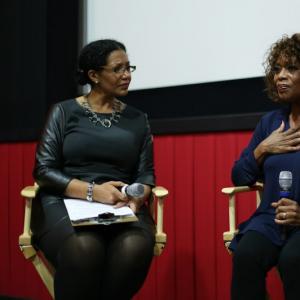
Sojourners Lisa Sharon Harper speaks with the film's star Alfre Woodard after screening. Brandon Hook / Sojourners
The ethos of slavery still runs deep in our national consciousness. Alfre Woodard, a supporting actress in the upcoming movie 12 Years a Slave, hopes that point is taken by all who see it.
“Whenever there is repression, it takes toll on everyone; especially a physical and psychic, stunting pain on the abuser,” Woodard said at a panel following a pre-screening of the movie hosted by Sojourners last week. “My hope, expectation is that audiences will start to think about slavery in a new way. That they’ll come away with some small perspective to understand each other better.”
The panel gathered to begin the conversation about residual impacts of slavery on the United States. Woodard started the discussion with a description of what it was like to be set and involved with a film that revolves around such a difficult emotional topic.
[view:Media=block_1]

Renisha McBride was killed in a suburb of Detroit. dignidadrebelde/flickr
In the early morning of Saturday, Nov. 2, Renisha McBride, 19-year-old black woman from Detroit, crashed her car in Dearborn, a predominantly white Detroit suburb. Lacking battery power for her cellphone, she approached a nearby home to ask for help. Theodore Paul Wafer, a white man, answered the door. He responded to her knock by shooting a firearm through a locked screen door, striking Renisha in the face and killing her. Police initially said that the white man mistook her for an intruder and shot her in self-defense, even though Renisha was unarmed and there is no evidence of her attempting to enter the house uninvited. Two weeks passed before the Wafer was charged with second-degree murder and arrested. Wafer maintains that he acted in self-defense. If the recent George Zimmerman acquittal is any indication, it is entirely possible that justice will not come to pass.
A black woman is dead because a white man decided that she should die. A black woman is dead and there is no guarantee, that in 21st-century America, justice will be done.
This is America and this is not new.
I’d never heard of Renisha McBride until her death became a national news story a little more than two weeks ago. But in a way, I’ve known Renisha my whole life. Renisha’s story echoes the stories of black women across the arc of American history.
American Promise spans 13 years as Joe Brewster and Michèle Stephenson, middle-class African-American parents in Brooklyn, N.Y., turn their cameras on their son, Idris, and his best friend, Seun, who make their way through one of the most prestigious private schools in the country. Chronicling the boys’ divergent paths from kindergarten through high school graduation at Manhattan’s Dalton School, the documentary presents complicated truths about America’s struggle to come of age on issues of race, class, and opportunity. American Promise is an Official Selection of the 2013 Sundance Film Festival.
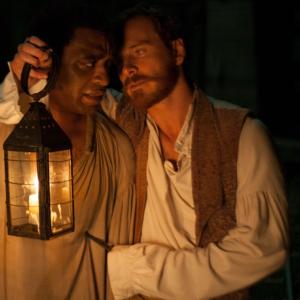
'12 Years a Slave' still, Fox Searchlight
Before I saw the new film 12 Years A Slave, I knew nothing about Solomon Northrop or his astounding story of courage, forbearance, and faith.
I’d never heard of Northrop, an African-American freeman, who was born and reared in upstate New York in the early 1800s, well before the abolition of slavery in the rest of the nation. I’d not known of the historical practice of kidnapping freeborn black Americans in the North and selling them into slavery in the South.
I’d never heard about how Northrop, an accomplished violinist, was bamboozled into traveling from his farm in Hebron, N.Y., where he lived a prosperous life with his wife and three children, to Washington, D.C., for work, but was drugged, kidnapped, and sold in Louisiana. I’d never heard how he remained for a dozen years before heroically regaining his freedom in 1853 — one of a very few kidnapped freemen and freewomen ever to regain their freedom.

'12 Years a Slave' still, Fox Searchlight
The most controversial sentence I ever wrote, considering the response to it, was not about abortion, marriage equality, the wars in Vietnam or Iraq, elections, or anything to do with national or church politics. It was a statement about the founding of the United States of America. Here’s the sentence:
"The United States of America was established as a white society, founded upon the near genocide of another race and then the enslavement of yet another."
The comments were overwhelming, with many calling the statement outrageous and some calling it courageous. But it was neither. The sentence was simply a historical statement of the facts. It was the first sentence of a Sojourners magazine cover article, published 26 years ago titled “America’s Original Sin: The Legacy of White Racism.”
An extraordinary new film called 12 Years a Slave has just come out, and Sojourners hosted the premiere for the faith community on Oct. 9 in Washington, D.C. Rev. Otis Moss III was on the panel afterward that reflected on the film. Dr. Moss is not only a dynamic pastor and preacher in Chicago, but he is also a teacher of cinematography who put this compelling story about Solomon Northup — a freeman from New York, who was kidnapped and sold into slavery — into the historical context of all the American films ever done on slavery. 12 Years is the most accurate and best produced drama of slavery ever done, says Moss.
In her New York Times review, “ The Blood and Tears, Not the Magnolias,” Manohla Dargis says, 12 Years a Slave “isn’t the first movie about slavery in the United States — but it may be the one that finally makes it impossible for American cinema to continue to sell the ugly lies it’s been hawking for more than a century.” Instead of the Hollywood portrayal of beautiful plantations, benevolent masters, and simple happy slaves, it shows the utterly brutal violence of a systematic attempt to dehumanize an entire race of people — for economic greed. It reveals how morally outrageous the slave system was, and it is very hard to watch.
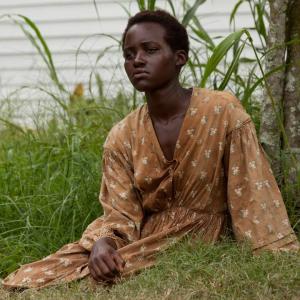
Movie still from '12 Years a Slave' Fox Searchlight
When we consider the typical church worship service in the United States, we discover certain trends. Lament and stories of suffering are conspicuously absent. In Hurting with God, Glenn Pemberton notes that laments constitute 40 percent of the Psalms, but in the hymnal for the Churches of Christ, laments make up 13 percent, the Presbyterian hymnal 19 percent, and the Baptist hymnal 13 percent.
Christian Copyright Licensing International (CCLI) licenses local churches for the use of contemporary worship songs. CCLI tracks the songs that are employed by local churches, and its list of the top 100 worship songs as of August 2012 reveals that only five of the songs would qualify as a lament. Most of the songs reflect themes of celebratory praise: “Here I Am to Worship,” “Happy Day,” “Indescribable,” “Friend of God,” “Glorious Day,” “Marvelous Light,” and “Victory in Jesus.”
How we worship reveals what we prioritize. The American church avoids lament. Consequently the underlying narrative of suffering that requires lament is lost in lieu of a triumphalistic, victorious narrative. We forget the necessity of lament over suffering and pain. Absence doesn’t make the heart grow fonder. Absence makes the heart forget. The absence of lament in the liturgy of the American church results in the loss of memory.
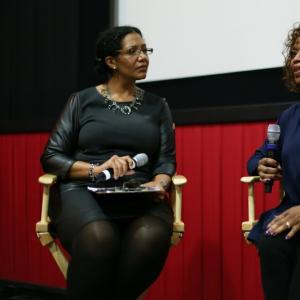
LIsa Sharon Harper speaks on a panel with film star Alfre Woodard and faith leaders. Photo by Brandon Hook / Sojourners
I once spoke to a writing class at a respected evangelical university on the Good Samaritan, a basic message about God’s call to love everyone. In the course of my hour-long lecture, I mentioned the word “slavery” once. One time.
That one mention was met with this one question during the Q-and-A time: “What does slavery have to do with anything?”
The young evangelical proceeded to tell me, “slavery only lasted about 50 years and it wasn’t even that bad. I mean they were better off because of it, right? They got Christianity, didn’t they?”
I learned a survival lesson on that day: Don’t even mention the “s” word to white people. It’s not safe.
But last week, at Sojourners’ Special Faith Leaders’ Screening of 12 Years a Slave, Dr. Barbara Williams-Skinner said something profound during the post-screening panel discussion of the film:
“White people don’t want to talk about what happened,” Williams-Skinner said. “We need racial reconciliation in our nation and in the church, but reconciliation requires repentance and how can we get to repentance, if we can’t even have the conversation?”
We do need racial healing. Our nation needs it desperately.

Martin Luther King, Jr. Memorial, mdgn / Shutterstock.com
Are we waiting for another Dr. King? As I collect my thoughts to write these words, I’m mindful that I don’t honestly know what discrimination is. I have never (consciously) experienced discrimination because of my race, the color of my skin, or where I come from. I have never had to say, like Solomon Northup, “I don’t want to hear any more noise.” In the film, 12 Years a Slave, Solomon refers to the cry of those being beaten and separated from their children. I speak here with a profound sense of respect and fear. Who am I, or maybe even you who read, to speak about a tragedy and a pain that we have never experienced? I only speak out of a sense of duty and a calling from God.
Dr. King wrote, “So many of our forebears used to sing about freedom. And they dreamed of the day that they would be able to get out of the bosom of slavery, the long night of injustice … but so many died without having the dream fulfilled.” (A Knock at Midnight, p.194)
To this day, millions of African Americans in our country still dream about getting out of the bosom of slavery. Slavery today is masked behind the social, financial, political, and even religious systems that deny the dignity and full integration into these systems to people of color. Solomon Northup cries out in the film saying, “I don’t want to survive, I want to live.” The struggle of African Americans is a struggle to live. So far, they have only survived.
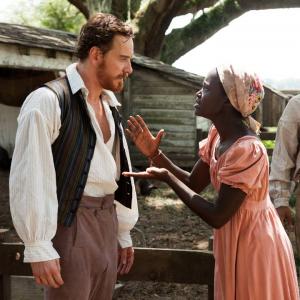
Michael Fassbender, Lupita Nyong'o and Chiwetel Ejiofor in 12 Years A Slave. Fox Searchlight / Facebook
Crickets chirping, a branch creaks, and a black body swings on a tree whose roots grow deep into a shared story of our American past. These are images that are floating in my mind, after watching a pre-screening of12 Years a Slave. This film was a terribly beautiful depiction of the antebellum south and the atrocity known as slavery. Its honesty was riveting, as the film portrays characters in ways never captured before on the big screen. They were characters such as Mistress Shaw (played by Alfre Woodard), the black wife of a slave master who is adored by her husband and treated as a white woman. In a panel discussion, Lisa Sharon Harper of Sojourners asked Woodard, about this character. And she responded that in the South, there were all kinds of arrangements between whites and blacks. Her character Mistress Shaw learned how to survive. I was so refreshed that 12 Years a Slave, was a new depiction of slavery instead of a rehashing of Roots orAmistad.
The panel also consisted of a plethora well-informed faith leaders. One of the panelists, Jim Wallis, while discussing the aspects of faith profoundly said, “Enslaved Africans saved Christ from the Christians.” I was immediately struck by his words as they reminded me of how I became a Christian.

Antique statues, neko92vl / Shutterstock.com
Strange but beautiful things happen when we begin to identify with people who are culturally different. A few years ago, I became friends with Peter, a guy at my church who also happened to be an undocumented immigrant. One day over lunch, he shared that his mother (whom he hadn’t seen in 15+ years) had recently been diagnosed with a terminal disease. He desperately wanted to visit her, but due to his immigration status, he knew that if he left the U.S. he wouldn’t be allowed to return. Given his obligations to his family in the U.S., Peter made the heart-breaking decision to not to visit his dying mom.
As a U.S. citizen, I hadn’t personally experienced the trials of being undocumented or felt the frustration of geographic immobility while a loved one approached death in a far off land. But throughout my friendship with Peter — getting to know his family in the U.S., listening to him share about the harrowing challenges he experienced on a daily basis, and seeing photographs of his life and family in his home country — I got a glimpse of the world from his perspective. In many ways, Peter’s life was marked by sorrow and loss – and that was more evident than ever during our lunch conversation that day.
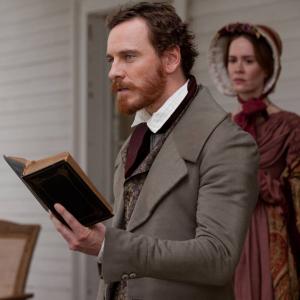
'12 Years a Slave' still, Fox Searchlight
I pre-screened 12 Years a Slave the same weekend I saw Gravity. The two films couldn’t be more different, although they do have some fascinating (if not immediately obvious) commonalities.
As for commonalities, they’re both powerful and both deserve to be seen. Both are about people trying to get home — one, in a harrowing adventure that takes several hours, the other in an agonizing 12-year struggle. The protagonists of both movies demonstrate heroic resilience and courage. One struggles with physical weightlessness, the other with a kind of social or political weightlessness.
Although Gravity impressed and fascinated me, 12 Years a Slave affected me and shook me up. Now, several days later, scenes from the film keep sneaking up on me and replaying in my imagination — three in particular.

'12 Years a Slave' still, Fox Searchlight
I watched 12 Years a Slave today. The film is based on Solomon Northup’s autobiography by that name. Northrup was a free black man living in Saratoga, N.Y. He was lured away from his home to Washington, D. C., on the promise of lucrative work and was kidnapped, transported to Louisiana, and sold into slavery. He was rescued 12 years later.
Some of the questions and issues that the movie raises are: What right do people have to own others? Do money and might make right? Unjust laws — such as slave laws — exist. It just goes to show that something can be legal, yet morally wrong. Still, laws come and go. We must not confuse laws with rights, which are universal and enduring truths that do not change. What is true and right and good is always so. So, too, that which is evil is always evil. Even if unjust laws are overturned and abolished, evil can still return in other guises.
I asked myself as I watched the movie, “Could it happen again?” Some of us may think, “Surely, something like this could never happen in our day.” And yet, people are abducted and sold into various forms of slavery here and abroad on a daily basis. Granted — people are not publicly bought and sold on the slave block in America today because of skin color; however, people are enslaved based on race and class divisions.

'12 Years a Slave' still, Fox Searchlight
Since the production of The Birth of a Nation, Hollywood has lived with the mythic world imagined by artists who view the lives of people of color as footnotes and props. From Gone With The Wind to Django Unchained, the most difficult type of film for Hollywood to get right is the antebellum story of people of color.
Django, for example used the archetypes designed by Hollywood — “Mammy, Coon, Tom, Buck, and Mulatto,” to quote film historian, Donald Bogle — and exploit them in order to create a hyper-exploitation Western fantasy, with slavery as the backdrop. The film is a remix and critique of exploitation clichés, not a historical drama seeking to illuminate our consciousness. Django is a form of visual entertainment where enlightenment might happen through a close reading of the film. All the archetypes remain in place. Nothing is exploded or re-imagined, only remixed to serve the present age.
Steve McQueen’s 12 Years A Slave, on the other hand, sits within and outside the Hollywood fantasy of antebellum life. I say it sits within, because the archetypes forged by the celluloid bigotry of D.W. Griffith are present. But, in the hands of the gifted auteur, Steve McQueen, they are obliterated and re-imagined as complex people caught in a system of evil constructed by the immorality of markets, betrothed to mythical, biological, white supremacy.